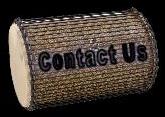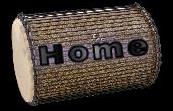







- The Process
- My Bio Assistant
- Choosing Griot
- Matriarchal GriotBook
- GriotBook Deluxe
- Patriarchal GriotBook
- GriotBook Pricing
- Frequently Asked Questions
CREATING A TIMELINE QUICK LINKS

GRIOTBOOK.COM © 2013-2015 ALL RIGHTS RESERVED Powered By GriotSites.com
Creating a family history timeline can help you learn a lot about your family. The task can be time-consuming and complicated at some points. However, in the end you will have a complete history of your family that can be passed down to future generations.
A genealogy timeline is a visual aid that shows an ancestor's birth and death, as well as any other major events such as marriage, the birth of children and emigration. A Timeline can help you organize, plan and evaluate your research by showing at a glance what you've learned, what information is missing and what highlights or events that took place at which time. Also you can include local and world events that took place during the era that your Ancestors were alive. Timelines can be included in the GriotBook to provide a much cleaner chronological record of your Ancestors. We recommend that each GriotBook Historian create a family timeline.
Just to be clear, the purpose of a Timeline is to gather information about significant events in your family's past. Write down birth dates, death dates, graduation dates and any other significant dates in chronological order. We have gathered together some suggestions to assist you in creating your Timeline.
What tools will you need to create your Timeline?
Some sites offer free Timeline Templates to get you started. We provide free Timeline Templates as well but only to GriotBook Historians. You can request one via email at forms@griotbooks.com.
If you prefer not to use a template, may we suggest that you use a spreadsheet or a table in a word processing document? These particular formats provide unlimited space and can be updated easily.
Where do you start?
We suggest that you begin your timeline with your Ancestor’s birth date. Go back as far as you can go to the oldest Ancestor. Even if you don’t know their exact birthdate, you may run across it at a later date during your research.
Make a small section for each individual’s personal information. Create a chronological profile of that person's life that you can expand as you continue to gather more information.
What to include on the Timeline.
We suggest that you include the following:
Date and place of events- Write the date of each event in the ancestor's life in chronological order.
Personal information-Include personal information such as education information, Employment details, Military service, Marriage information if any, Movement between towns or emigration, Birth of children, Death of parents, etc.
Age: Record the person's age at the time of each event. When you don't have a specific birth date, censuses and other records can help you narrow the possibilities. Use the abbreviation c or ca (from the Latin circa, meaning "about") to show an estimated age-for example, c 37 (about 37).
Event and location: Include any information you uncover about the ancestor, such as birth and death, religious milestones, education, employment, military service, marriage(s) and land
Documentation: Citing your sources is essential. Entries in this column can be full or abbreviated citations. For example, the full citation for Katrina Johnson's estimated birth date of 1910-1949 could read, "1930 US census, roll 330, Jacksonville, Mississippi, p. 278, family 62, household of James Johnson (including Katrina, age 41)." An abbreviated citation could read, "1930 census, Jacksonville, MS., p. 278, fam. 62, showing Katrina, age 41." If you do abbreviate the citation, be sure to include the full documentation elsewhere in your notes.
Just to be clear, the purpose of a Timeline is to gather information about significant events in your family's past. Write down birth dates, death dates, graduation dates and any other significant dates in chronological order. We have gathered together some suggestions to assist you in creating your Timeline.
What tools will you need to create your Timeline?
Some sites offer free Timeline Templates to get you started. We provide free Timeline Templates as well but only to GriotBook Historians. You can request one via email at forms@griotbooks.com.
If you prefer not to use a template, may we suggest that you use a spreadsheet or a table in a word processing document? These particular formats provide unlimited space and can be updated easily.
Where do you start?
We suggest that you begin your timeline with your Ancestor’s birth date. Go back as far as you can go to the oldest Ancestor. Even if you don’t know their exact birthdate, you may run across it at a later date during your research.
Make a small section for each individual’s personal information. Create a chronological profile of that person's life that you can expand as you continue to gather more information.
What to include on the Timeline.
We suggest that you include the following:
Date and place of events- Write the date of each event in the ancestor's life in chronological order.
Personal information-Include personal information such as education information, Employment details, Military service, Marriage information if any, Movement between towns or emigration, Birth of children, Death of parents, etc.
Age: Record the person's age at the time of each event. When you don't have a specific birth date, censuses and other records can help you narrow the possibilities. Use the abbreviation c or ca (from the Latin circa, meaning "about") to show an estimated age-for example, c 37 (about 37).
Event and location: Include any information you uncover about the ancestor, such as birth and death, religious milestones, education, employment, military service, marriage(s) and land
Documentation: Citing your sources is essential. Entries in this column can be full or abbreviated citations. For example, the full citation for Katrina Johnson's estimated birth date of 1910-1949 could read, "1930 US census, roll 330, Jacksonville, Mississippi, p. 278, family 62, household of James Johnson (including Katrina, age 41)." An abbreviated citation could read, "1930 census, Jacksonville, MS., p. 278, fam. 62, showing Katrina, age 41." If you do abbreviate the citation, be sure to include the full documentation elsewhere in your notes.

GriotBooks.com Timeline Sample









